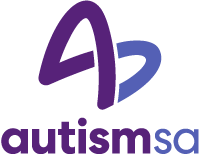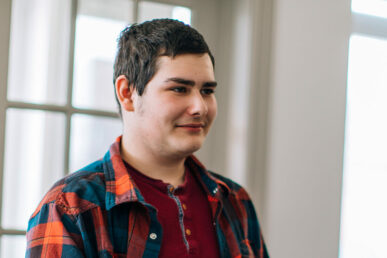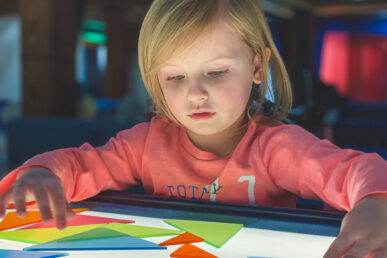Autism First Signs: A Checklist for Babies and Toddlers
A diagnosis of autism is made on a set of characteristics rather than any biological tests. This is one of the reasons why it can be difficult to recognise that a child is on the spectrum until they are between 18 and 22 months of age (although some of the signs of autism may be noticed before the age of 1).

Milestones and development
All children learn behaviours and skills as they grow, and the pace at which this happens will naturally vary from child to child. However, there are certain developmental milestones that babies and toddlers can be expected to reach within an average or typical timeframe.
If a baby develops at a markedly different rate, or there are significant differences in the way in which they are developing when compared to others of the same age, this could be a sign that they may be on the autism spectrum (although this will not automatically be the case, as there can be any number of factors that impact on a baby’s development).
For parents or carers of a child whose rate of development is different to that of their peers, and who think that they may have autism, this checklist of signs and characteristics may be helpful.
The ASDetect app also provides videos illustrating some of the characteristics of autism in babies and toddlers, and so can be a further useful tool for parents and carers.
However, it is important to remember that the checklists and app are simply guides, and that healthcare professionals are trained to be able to recognise signs of developmental differences in babies. Therefore, any concerns that you have should always be discussed with a professional, while a diagnosis of autism can only be made by a qualified diagnostic specialist.
Signs and characteristics of autism in babies checklist
These are some common characteristics of autism that may be observed in babies and young children, although it is unlikely that a child will show signs of all of them. Some signs may change over time, or become more obvious as a child gets older.
Early signs of autism in babies (6 months to one year) may include:
- Reacting in an unexpected way to new faces
- Rarely smiling in social situations
- Making little or no eye contact
- Difficulty in following objects with their eyes
- Hearing their name does not produce a response
- Having limited or no reaction to loud sounds, or not turning their head to locate sounds
- Overreacting to some sounds
- Displaying a lack of interest in interactive games, like peek-a-boo
- Chattering, or imitating sounds and words is limited
- Gestures like pointing at an object they want or waving back at others are limited
- Tendency not to imitate the actions of other people
- Dislike of being touched or cuddled, or not reaching out when about to be picked up, or
- Displaying unusual or repetitive body movements.
Early signs of autism in toddlers up to 24 months may include:
- Limited or no speech
- Only walking on their toes
- Difficulty in following simple verbal instructions
- Gestures and imitating others’ actions are limited
- Showing an intense interest in certain objects, at the exclusion of all else
- Showing an intense interest in unusual or unexpected objects or materials
- Unwillingness to share objects or activities they are interested in, or to engage the attention of others, or
- Engaging in repetitive actions and activities, such as putting objects into lines or groups, etc.
Early signs of autism in young children up to 36 months may include:
- Limited speech
- Difficulties in being able to follow simple verbal instructions
- Showing little interest in imaginative play, such as pretend games
- Showing little interest in other children
- Wanting routines to be followed and being upset by change
- Extreme sensitivity to sight, sound, smell, taste and some other sensory experiences
- Displaying limited or no sensitivity to some sensory experiences such as heat, cold, touch, hunger, thirst or pain, or
- Becoming fixated on playing with particular toys, activities or actions.
Should I get an autism assessment for my baby?
It is important to remember that these are signs and characteristics that babies and toddlers with autism may display, but they are by no means definitive, and their presence or absence should not be taken by parents or carers as conclusive evidence of autism or otherwise.
Instead, if your baby or toddler displays some of the characteristics of autism outlined above, or is developing at a different rate to other children of their age, it is important that you get the advice of a medical professional, such as your GP, a nurse or a health worker.
Some signs may change over time, or become more obvious as a child gets older.
Getting an autism assessment
An autism assessment conducted by trained and qualified specialists in diagnosis will answer the question as to whether an individual is on the autism spectrum or not.
For many years Autism SA has provided autism assessments. Due to high demand we are not taking any new referrals at this time. We apologise for the inconvenience.
There are many Diagnosticians across South Australia. Please look at our Diagnosticians Directory and contact them directly to find out wait times and costs. Please note, the directory does not include all diagnosticians in the state.
Diagnostician directoryGet a copy of the ultimate resource: The Spectrum booklet
Autism SA is proud to launch The Spectrum: A Guide to Supporting a Child on the Autism Spectrum.
The booklet is designed to assist parents through the autism journey with four comprehensive sections: Understanding Autism, Getting an Autism Diagnosis, Supports and Services, and Strategies and Practices.
You can now purchase The Spectrum booklet for just $29.95. Buy now
Purchasing the PDF allows you to print off the booklet or select pages so you can keep a hard copy on hand when you are seeking practical, credible information about autism. Plus there are additional materials including templates and infographics.
Enquire about this article








